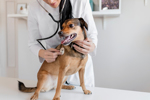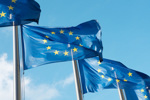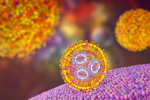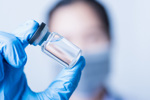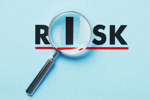-
FDA Publishes Final Guidance On Reporting Listed Drug Amounts
Despite earlier efforts to shore up the U.S. drug supply chain, COVID-19 still brought shortages. A new FDA reporting system aims to reduce future supply risks.
-
Quick Takes From Takeda Austria’s Annex 1 Rollout
At ISPE's 2024 Aseptic Conference, Takeda Austria's site head spoke about lessons learned from Annex 1 implementation. We caught up with her and asked for the highlights.
-
Navigating Grades And Sources Of Materials In Drug Manufacturing
From raw materials to finished dosage forms, understanding material quality is essential in drug manufacturing. This article examines how material grades and sources guide selection for optimal safety and functionality.
-
Fine-tuning Analytical Development Strategies For Every Phase
Analytical challenges morph phase-by-phase during drug development. Three Novartis scientists describe a platform approach based on guidance from the ICH and USP.
-
Top 10 Biologics Approved In 2023
In 2023, 18 new biologic drugs were approved by the EMA and 34 by the FDA. Dive into the 10 most important drugs that cover unmet medical needs and have the highest potential to revolutionize medical practice.
-
A Structured Approach To Regulatory Information Management Vendor Selection
Deploying a formal system for regulatory information management is a given now for all life sciences companies, irrespective of their size and focus. Regulators expect this, particularly as data rather than static documents evolves to become the default.
-
Navigating China's Biologics Approval And Accelerated Pathways
Pharma companies doing business in China have four key routes to register drugs faster than the standard ways. This discussion breaks down accelerated pathways and offers tips on how to approach them.
-
Understanding And Navigating Diverse Regulatory Environments
Drug developers aspire to treat patients globally, but navigating diverse regulatory structures around the world gets tricky. These consultants offer a primer on the regulatory bodies of the world.
-
New DSCSA Guidance Details Layers Of Verification System Requirements
A recent FDA final guidance interpreting the DSCSA details verification systems expectations for trading partners. Just how they should meet these expectations, however, remains unclear.
-
Trends In FDA FY2023 Inspection-Based Warning Letters
The U.S. FDA issued 180 warning letters to drug and biologics manufacturers in fiscal year 2023 (FY23) and 94 of them were based on an on-site inspection of the company. This article provides an analysis of trends and observations from the inspection-based letters, as well as additional insight on the agency’s approach to enforcement.
-
Impact Of Immunogenicity On Efficacy And Safety Of Biosimilars
The presence of anti-drug antibodies (ADAs) can affect the effectiveness and safety of biologic drugs. Read why regulatory agencies emphasize the need for extensive immunogenicity evaluation in biosimilar development.
-
Development And Regulation Of Veterinary Monoclonals
Although veterinary mAbs have achieved commercial success, ongoing discussions and clinical developments surrounding them are expected to outline a clear regulatory pathway in the near future.
-
Revolution In The EU Pharmaceutical Legislation Ahead
Discover the impact revised pharmaceutical legislation will have on the industry by superseding regulations that have fostered the availability of safe and effective medicines for the past two decades.
-
FDA Issues Final Guidance: Reformulating Drug Products That Contain Carbomers Manufactured With Benzene
Benzene contamination in pharmaceuticals has led to product recalls and increased scrutiny in recent years. Recently, the FDA has asked the USP to remove a few monographs from the compendium due to safety concerns related to benzene's carcinogenic properties, and the agency has issued a new guidance to help industry navigate the reformulation of such drug products.
-
Decoding The FDA's Draft Guidance On Computer Software Assurance For Medical Devices & Bio/Pharma
In 2022, the FDA released a draft guidance on computer software assurance that promises to reshape the validation of automated data processing system and quality system software in the pharma/medical device industry and to enhance the quality, availability, and safety of medical devices. This article walks through the key elements of the guidance.
-
A New Year’s Resolution Suggestion For The FDA
Many pharma/biotech companies have continuing compliance problems when getting inspected by our friends at the FDA. In this article, this industry observer with almost 50 years of experience shares some New Year's resolution wishes for the FDA, and, by extension, industry members can consider the list as the foundation for sustainable quality in your operations.
-
WHO’s 6 Principles For An AI Regulatory Framework For Medical Product Development
In mid-Oct. 2023, the WHO published a paper titled Regulatory Considerations on Artificial Intelligence for Health, identifying the key principles that international regulatory frameworks for artificial intelligence (AI) should address and are, in fact, starting to coalesce around. The paper was developed in consultation with a WHO Working Group whose members include regulatory authorities, policy makers, and more.
-
Mapping The Biosimilar Regulatory Landscape In The Middle East
Countries in the Middle East and North Africa are promising markets for biosimilar drugs, but inconsistent regulations pose a challenge. Here's an overview of regulatory structures across the region.
-
Trends In Next-Generation Delivery Technologies
Learn how lipid nanoparticles are enabling a new generation of engineered cell therapies with a push toward more complex cell engineering and gene editing for allogeneic therapies.
-
Legal And IP Protection For New Biotechs
Want to ensure you've got your biotech legal, IP, and patent bases covered? Join Business of Biotech host Matt Pillar and BlueSphere Bio CEO and biotech legal expert Keir LoIacono on 11/13 for the live, interactive, and FREE digital event Legal And IP Protection For New Biotechs.
-
FDA Sets Recommendations For Predicting Dangerous Nitrosamine Impurities
The FDA recently published a final guidance that sets a recommended framework for predicting the potential of nitrosamine drug substance-related impurities.
-
FDA Warning Letters Dipped, But Don’t Get Cozy
Between October last year and March this year, FDA inspectors showed a heightened level of discretion for OAI inspections, choosing to withhold enforcement action. This isn't an invitation to breathe easy; there's a reasonable explanation for less enforcement action.
-
Quality Management Evolves From Function To Culture Of Bio/Pharmaceutical Businesses
Quality management maturity is an important new trend in the bio/pharmaceutical industry, lauded as the latest evolution in quality management systems and, as recently as September 2023, enshrined in the FDA’s regulatory documents as a defined assessment protocol.
-
Best Practices For Use Of Risk Registers In Bio/Pharmaceutical Manufacturing Operations
Risk registers can be a valuable risk management tool, and having a risk register is increasingly becoming a regulatory expectation. It can be structured as a database or spreadsheet and ensures decision makers have key information about risks. Discussion also includes pitfalls to avoid.
-
FDA Introduces Quality Management Maturity Program
The FDA program described in a new document, CDER’s Quality Management Maturity (QMM) Program: Practice Areas and Prototype Assessment Protocol Development, is a next logical step to drive better quality, more predictable outcomes, and supply chain assurance.
-
Understanding The FDA’s Current Focus On Risk Evaluation And Mitigation Strategies
The FDA recently asked for comments about how the government handles vendor change requests from drug sponsors with risk evaluation and mitigation strategies. So, we asked a REMS expert to help us understand why the agency is focusing on the broad-reaching program and what it could mean for drug manufacturers with REMS products in their portfolios.
-
Risk Tool Selection With ICH Q9(R1) In Mind
This article focuses on the formality concept discussed in the revision of ICH Q9 Quality Risk Management released earlier in 2023. The authors provide a helpful overview of what risk tools are appropriate to use during certain types of scenarios, and what the team composition should look like.
-
Your Best Chance At Regulatory Compliance For Combination Products: Integrated Development
The FDA now defines a prefilled syringe, a product that was at one point considered “packaging” for a drug, as a constituent part of a combination product. The ultimate combination of the drug, its package, and its delivery device means that during development and manufacturing you need to combine both drug and device current good manufacturing practices (cGMPs) and quality approaches.
-
Could RFID-Based Unit-Level Traceability Be Key To Operational Excellence?
Radiofrequency identification (RFID)-based unit-level tracking solutions for prefilled syringes are poised to help pharma manufacturers address key risks and costly bottlenecks related to the fill-finish process.
-
5 Best Practices For Responding To FDA Form 483 Inspection Observations
How you respond to FDA Form 483 observations will determine if they escalate into more serious consequences, such as a warning letter or enforcement action. You don't want that. Follow this 5-step action plan to make sure the findings are properly addressed.
ABOUT BIOSIMILAR REGULATIONS
The first biosimilar was approved for the European market in 2006. While the regulatory pathway for biosimilars in the U.S. was created as part of the Affordable Care Act in March 2010, the first biosimilar was only recently approved for the U.S. market in March 2015.
Biosimilars are essentially generic versions of large molecule biologics. However, the fact they are not exact copies of the reference product makes establishing regulations for their approval and release to market a more complicated process. The WHO, along with many other parties in the pharmaceutical industry, has argued that regulations governing the development and approval of small molecule generics are not appropriate for more complex biological medicines. As such, the WHO set out to establish regulations articulating the efficacy, safety, and quality standards biosimilars must meet and maintain to make it to market. These regulations specify that a biosimilar must prove its biosimilarity to a reference product through head-to-head comparisons. The biosimilar company must also submit non-clinical and clinical studies data and a pharmacovigilance plan to the appropriate regulatory body. Those navigating the landscape of current biosimilars regulations face the challenge of demonstrating a biosimilar’s safety, purity, efficacy, and potency.
The current U.S. Food and Drug Association (FDA) and European Medicines Agency (EMA) regulations for biosimilars require these biologic copies to undergo extensive analytical chemistry, manufacturing, and control (CMC) and clinical processes to prove similarity to the reference product. However, in comparison to the originator biologic, a biosimilar could see an accelerated approval process, as it might need less data to meet the established regulations. The EMA was the first regulatory authority to establish marketing regulations for biosimilars in 2005. Other countries including Australia, Canada, Japan, Korea, and South Africa have since turned to the EMA’s regulations, as well as the WHO’s regulations, as a model for crafting their own regulations. In 2012, the FDA released three draft guidances to assist biosimilar developers in demonstrating their product’s biosimilarity. To comply with existing U.S. regulations, manufacturers are expected to include structural analysis, functional assays, and data from animal and human clinical trials in their applications. As biosimilar production spreads globally, regulations have continued to shift and evolve. Currently, each governing body has differing definitions/terminology for biosimilars, and as such, has established varying regulations dictating what studies and data are needed to be approved for the market.
BIOSIMILAR DEVELOPMENT NEWS
- MAIWEIJIAN, First Approved Biosimilar Of Denosumab (120mg) In China
- Phase 3 Comparative Clinical Study Of Prolia And Xgeva (denosumab) Biosimilar Candidate HLX14 Met Primary Endpoints
- Samsung Bioepis Initiates Phase 3 Clinical Trial For SB27, Proposed Biosimilar To Keytruda (Pembrolizumab)
- Teva And mAbxience Announce Strategic Global Licensing Agreement For Oncology Biosimilar Candidate
- NeoImmuneTech Appoints Dr. Luke Oh, Ph.D. As New Chief Executive Officer
- Biosimilars Forum Announces Support For Increasing Access To Biosimilars Act
- Dr. Reddy's Laboratories Launches Versavo (bevacizumab) In The UK
- Fresenius Kabi And Formycon Reach Settlement Agreement For Ustekinumab Biosimilar Candidate












